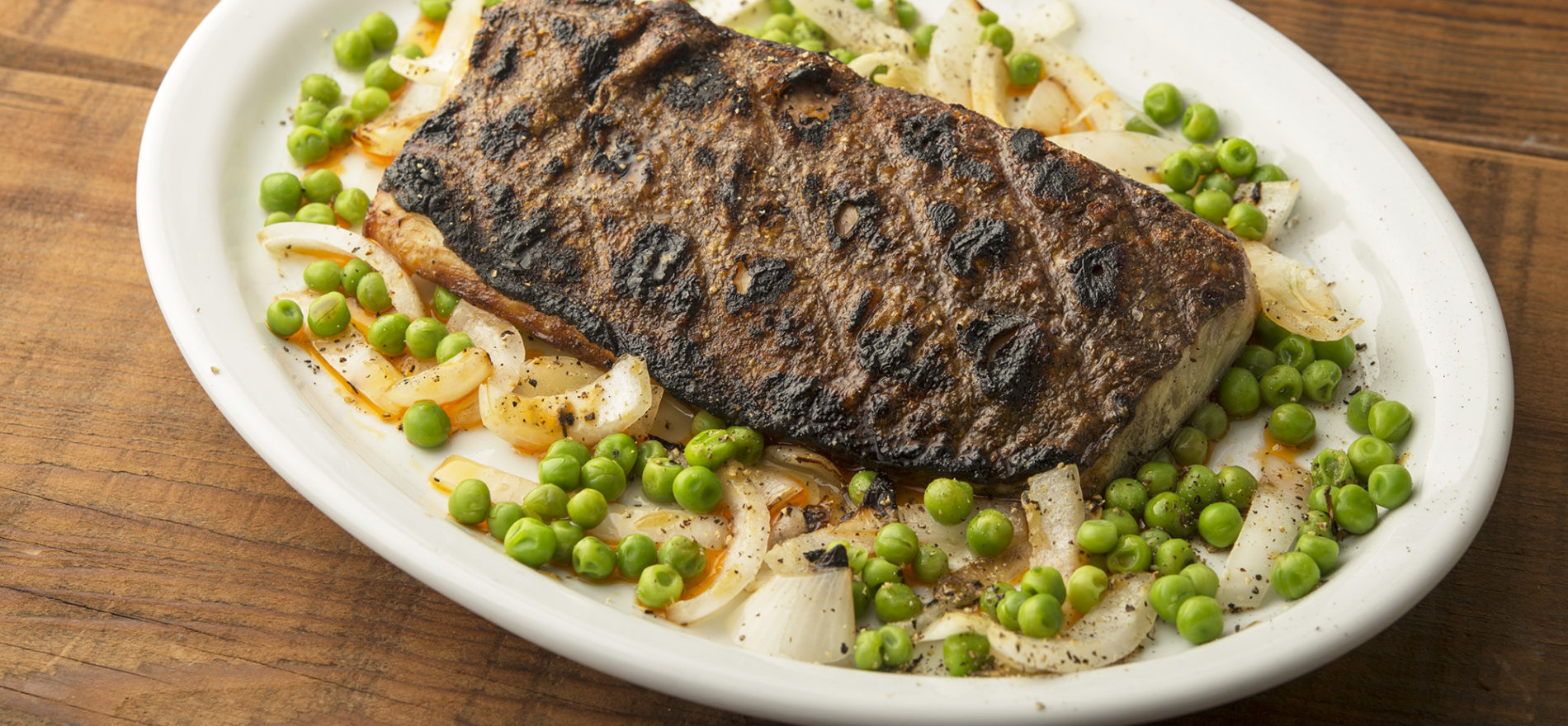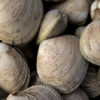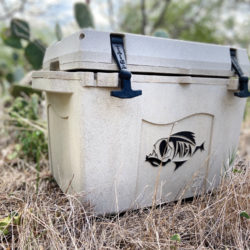So why eat fish skin?
First, it’s delicious. I even like it when it’s not crispy because it adds a certain lush stickiness to a dish. Second, fish skin holds the true character of many species. Some fish, like salmon or tuna, have fat in their meat. Many, like walleye or seabass or smallmouth bass, do not. The only fat they have is in the skin.
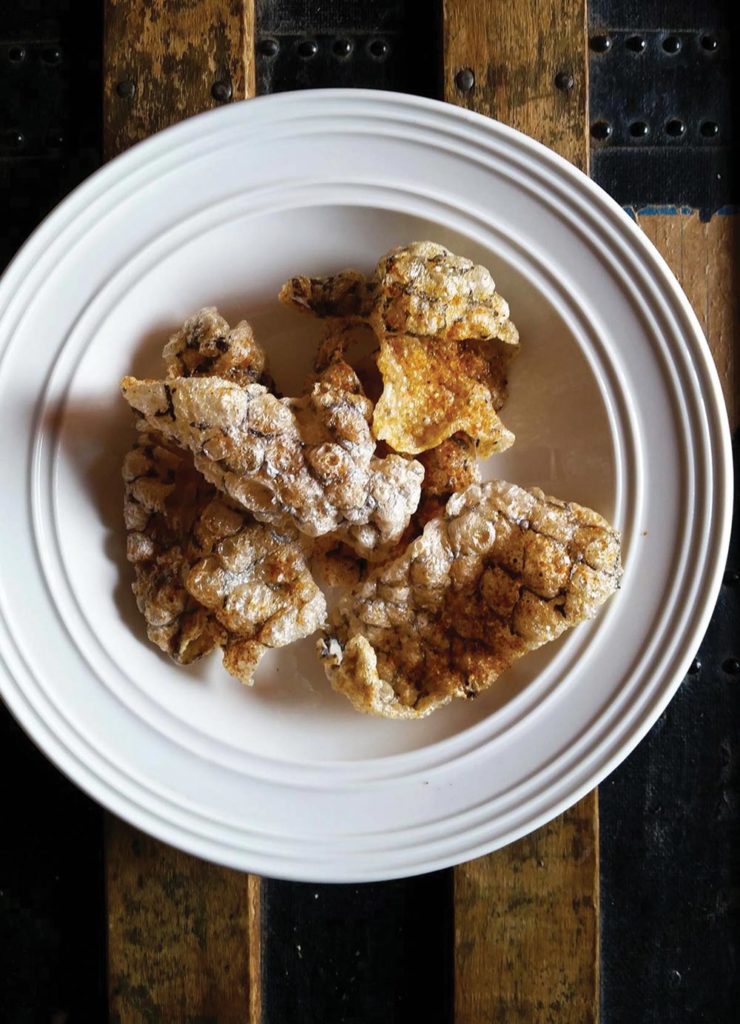
Much of that fat will be those healthy omega-3 fatty acids we’re all looking for. Fish skin is also high in vitamins D and E, as well as some trace nutrients like iodine.
The collagen in fish skin is believed to help maintain and rebuild our own skin, which is a nice side benefit… says the guy with arms that have seen decades of summer sun while fishing.
Good Fish Skin
Before we go any further, I am talking here about fish that have already been scaled and cleaned. Very few fish, notably salmon, trout and mackerel, are fine to eat unscaled — and even these are improved with scaling. (And yes, you can eat fish scales, but that’s another post.)
Which fish have the best skin to eat? The aforementioned salmon, trout and mackerel, for starters.
I have eaten the skins of hundreds of species of fish, freshwater and salt. They range from amazing to vile. We’ll get to the gross ones in a bit. In general, any bass or bass-like fish will have skin that is good to eat: Largemouth and smallmouth bass, white bass, striped bass, seabass of any kind, and all the little panfish (crappies, bluegills, etc.)
Ditto for any perch, and that includes walleye and sauger. Pacific rockfish skin is excellent, as is that of any sort of snapper or mackerel, not just the little ones. The skins from the various drum species — redfish, speckled trout, croakers, freshwater drum, etc. — are excellent, but many of the larger drum have heavy scales that are a beast to remove. Eating salmon skin is arguably the most popular, and for good reason. It’s fatty, and if seared crispy, you basically have a salmon potato chip.
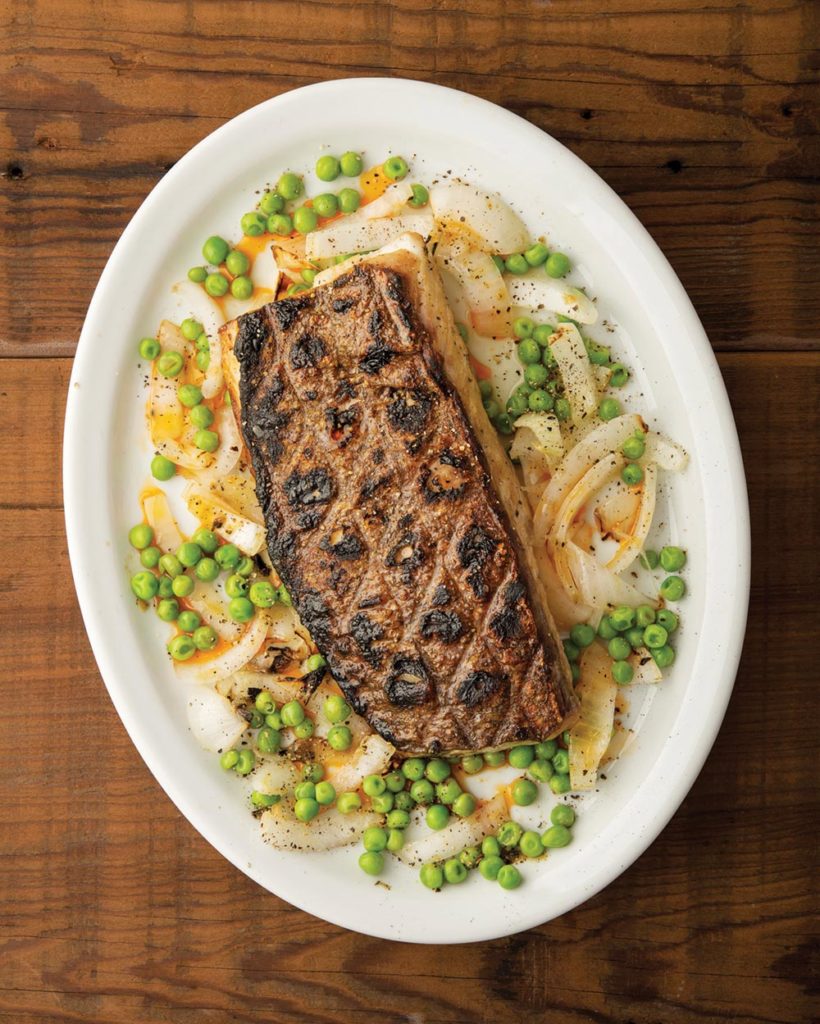
Photo by Holly a. Heyser
Another category of fish skin is the heavy skin group. These are all fish with thick skins, some so thick you can make leather out of them. Triggerfish, swordfish, sturgeon and sharks spring to mind, as do cobia, mahi mahi and really large jacks.
With these species, you actually want to treat their skin like pork rinds, by boiling the skin for a few minutes, scraping off any stray fat or meat, drying the skin completely, and then deep-frying it so it puffs like pork rinds.
Bad Fish Skin
Not all skins from all fishes are tasty treats. They generally fall into two categories: Weird texture and downright harmful or nasty.
Most familiar with most people will be catfish and eels. Neither have scales and both are pretty slimy. The skin from any really mucus-y fish can be difficult to work with, although they are all still edible. I have one recipe that uses catfish skin, a Vietnamese claypot catfish, and there the gelatinous nature of the skin actually helps the dish. But these cases are rare.
Yes, you can deslime any fish or eel and eat the skin — generally by scrubbing with lots of salt. If you’ve ever eaten unagi, the Japanese barbecued eel, you’ve eaten eel skin.
The skins from some flatfish can be both slimy and tough. Halibut, especially. This is why you rarely see halibut with the skin on. Same goes for codfish.
In some cases, notably carp, the skin just tastes bad. Muddy, or in the case of bluefish, fishy in a bad way — unless it is handled well and perfectly fresh. Monkfish skin is vile. I find that the skins from largemouth bass caught in warm water are not very nice. Cold water fish don’t have this problem.
The downright harmful fish skins are from those fish either living in polluted waters, or those that bioaccumulate mercury or other heavy metals. Tuna would be Exhibit A here. It is a general rule that if you are fishing in a place where there are health advisories for eating fish, remove the skin.
Will one meal of, say, striped bass skin in a place like the San Francisco Bay hurt you? No. But many will.
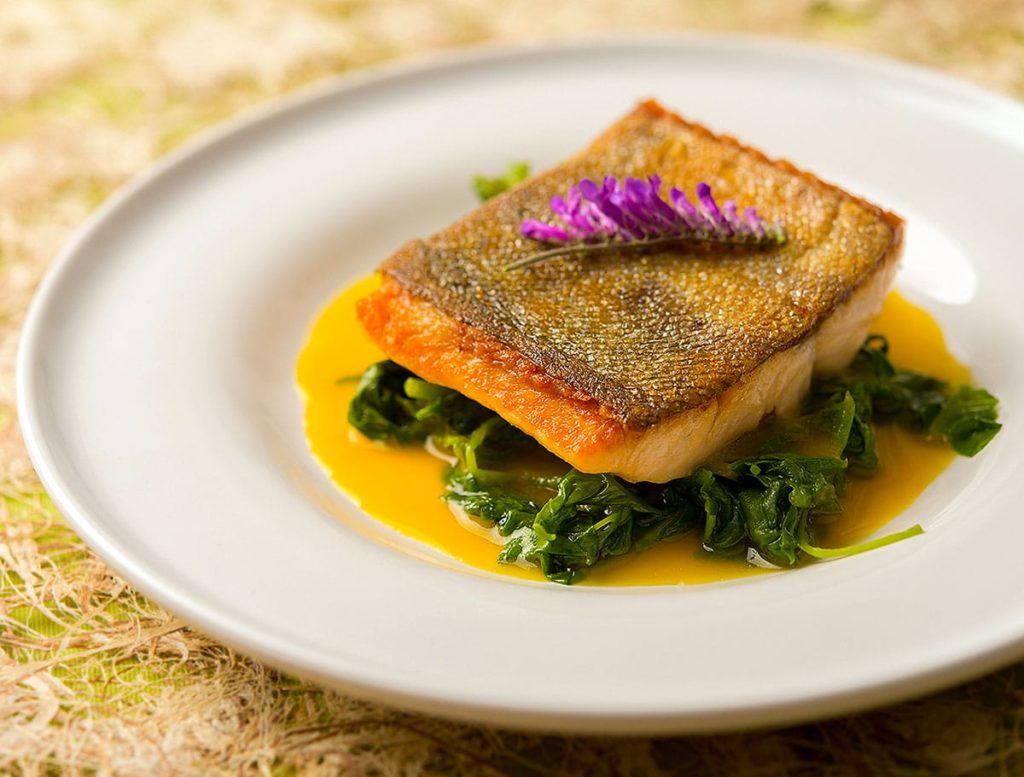
Capturing the Crispy
OK, so you have a skin-on piece of fish and you want to get it crispy. Here’s how to go about it.
First, scrape it with a butter knife before you even salt it. You’ll pick up any stray scales and remaining slime this way. Salt the fish at least 10 minutes before you cook it, and, if you salt lightly, up to a day in advance — keeping the fish in the fridge.
Then, before you cook it, scrape the skin one more time, then pat it dry with paper towels. Let the fish come to, or at least towards, room temperature. Ice cold fish hitting a hot pan will cause it to shrink and curl violently.
Get your pan hot. Then add high smoke point oil, such as safflower, canola, grapeseed or rice bran oil. Get that hot. When you see the slightest wisp of smoke, set the fish skin side down.
Weigh it down! This is very important. You can do this with your spatula, but I prefer to use a bacon press. They also make a version of a bacon press called a fish weight, which is basically a burger press. Leave the weight on for a minute or two, then you can slide it off.
Now, just baste the exposed fish with the raging hot oil until it turns opaque. You are ready when the fish skin is caramelized and the piece of fish comes off the pan easily.
Salt the skin the second it comes off the heat, and serve skin side up.
Hank Shaw is a chef, hunter, angler, forager and wild-foods expert constantly on the lookout for new things to gather, catch and eat. He is the author of four wild-game cookbooks: “Hunt, Gather, Cook: Finding the Forgotten Feast” (2011); “Duck, Duck, Goose: Recipes and Techniques for Ducks and Geese, both Wild and Domesticated” (2013); “Buck, Buck, Moose: Recipes and Techniques for Cooking Deer, Elk, Moose, Antelope and Other Antlered Things” (2016); and “Pheasant, Quail, Cottontail: Upland Birds and Small Game from Field to Feast” (2018). He is a contributing editor at The Virginia Sportsman.
Cover photo by Holly A. Heyser

